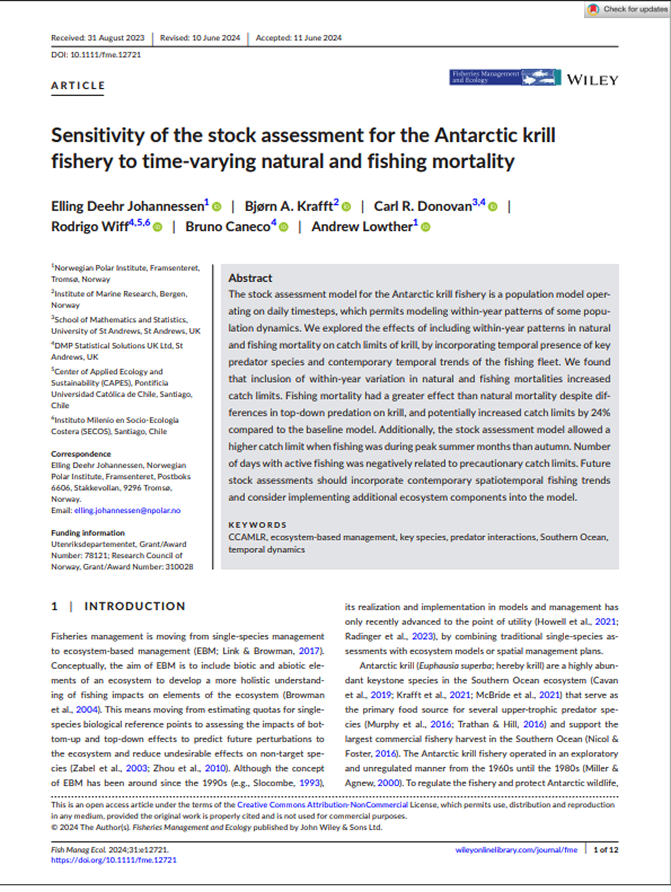Antarctic ecosystem
Fisheries management
Biomass
Krill (Euphausia superba)
Biomass of Antarctic krill in the Scotia Sea in January/February 2000 and its use in revising an estimate of precautionary yield
Summary
The CCAMLR-2000 Survey conducted the second large-scale assessment of Antarctic krill biomass in the Scotia Sea using standardized acoustic methods across four research vessels. The survey estimated krill biomass at 44.3 million tonnes with mean density of 21.4 g m⁻² (CV 11.4%). This estimate led to a revised precautionary yield of 4 million tonnes, up from previous estimates. The survey covered 19,500 km of transects across seven strata. Before fishery expansion, mechanisms must be established to prevent fishing concentration near predator colonies and account for krill migration patterns.

1
Map showing island groups and ocean floor depths in the Scotia Sea (shaded areas mark 500, 1000 and 3000 meter depth contours), adapted from Hewitt et al. (2002). The map displays survey zones outlined in black, historical fishing locations marked with red squares, and major ocean current boundaries shown as blue lines. From north to south, these current boundaries include the Subantarctic Front, the Polar Front, the Southern Antarctic Circumpolar Current Front, and the Southern Boundary of the Antarctic Circumpolar Current.Key Findings
1
The survey discovered a total krill population of 44.3 million tonnes with 11.4% measurement uncertainty. 2
Krill averaged 21.4 grams per square meter across the 2 million square kilometer study area. 3
Scientists updated the sustainable fishing limit to 4 million tonnes annually, an increase from earlier recommendations. 4
This international research effort involved four nations surveying 19,500 kilometers of ocean routes. 5
The densest krill concentrations were found in mid-scale ocean zones, ranging from 25.8 to 150.4 grams per square meter. 6
Krill populations are most concentrated along the Scotia Ridge, where current commercial fishing operations take place. 7
Two-thirds of the total krill biomass exists in areas where no commercial fishing has occurred historically. 8
Evidence shows krill populations migrate into the area from the Weddell Sea region.

